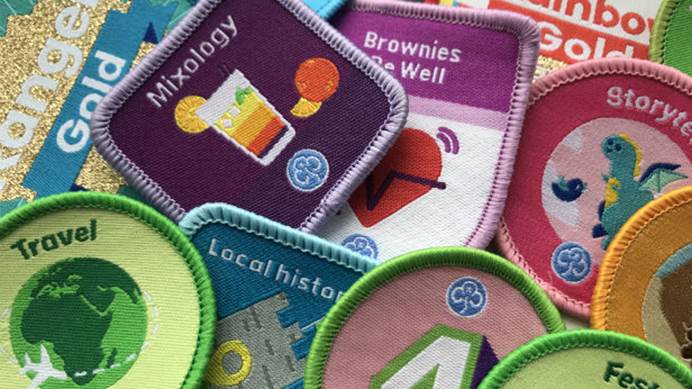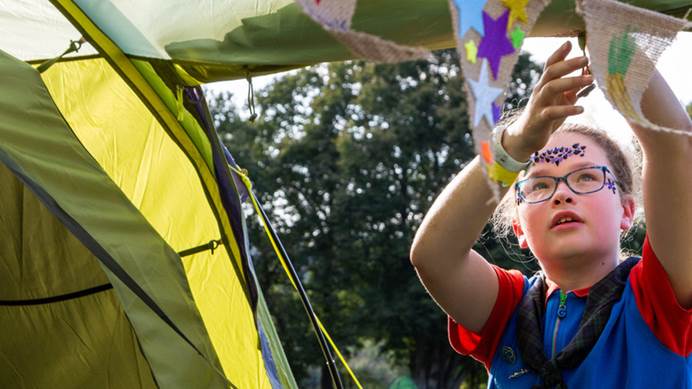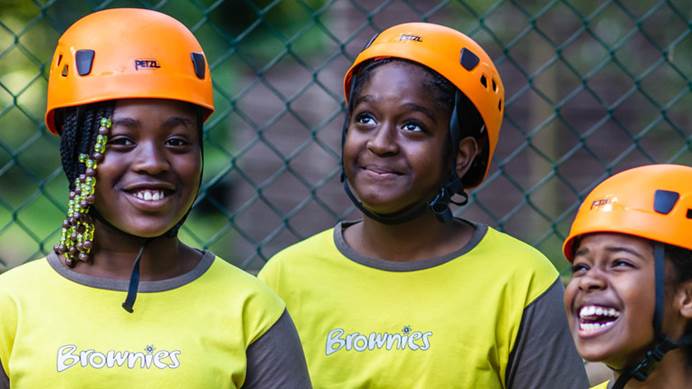Running live stream events
Stay safe and have fun when you run live events online
From digital campfires to virtual sleepovers – here’s how you can run an amazing live event online.
These live events can have hundreds of girls and their parents and carers joining in. Digital versions of guiding activities can keep members connected and show the world all the fun we have in our units.
A great way to run these events is through livestreaming – where video of the event is shared online as it happens. This is different from running a virtual meeting where you can see the girls who join. Live streams are a live broadcast where people who watch can comment on what you talk about or do, but you won’t see them on video.
When planning something like this, treat it like an in-person event and think about the steps you need to take to make sure all girls in your unit stay safe.
Things to think about
If you want to try running a livestreaming event for your unit – or your county! – follow this checklist to make sure you’re keeping everyone safe.
Before the event
- Think about what you want to achieve with your livestream – do you want to control who can join in, watch and comment? What age group is it aimed at?
- Consider what technology to use. Have a look at our advice below to find a service that provides what you and your audience need.
- Do you want people to sign up to your event? This will take some more planning. But it does give you more control. And you’ll have a better idea of who is attending and how many people will be there.
- Make sure girls are not signing up for social media accounts if they are not old enough. Younger girls can use their parents or carers accounts to join the event.
- If you’re planning to run activities that girls can join in or follow along at home, make sure you do a risk assessment.
- Remember, we’re connecting with children and young people online. If you can run your event in a more controlled way, then do. For example, a video meeting where you approve each person to join.
- Always have at least 2 adult volunteers that host the online event. And at least one volunteer who can moderate the comments and chat conversations.
- Make sure that the volunteers who are acting as moderators are prepared. Do they know how the platform works, are they clear on when they should remove comments and flag concerns or block users?
- Think about access needs so you can include as many people as possible - can activities be simplified or adapted? What captioning will you provide on videos?
- Create a description of your event. You use this on the day of your event, and for advertising your event. For example, Join Girlguiding [unit name] for an afternoon of live storytelling and fun activities! We’ll be recording the day so be aware your comments will be recorded and available to view after the event. This platform has an age limit, so anyone under the age limit should watch via a parents/carers account, and have an appropriate adult nearby throughout the event.
During the event
- Have volunteers moderating the chat comments to make sure nothing unsuitable gets posted.
- Make sure that as with all virtual guiding, girls have an adult in the room or nearby during the event. Repeat this message throughout the broadcast in case people tune in halfway through.
- Make it clear to everyone watching if you are recording the session or not. This might influence their level of engagement. Repeat this message several times throughout your event.
- Stop the livestream immediately if you have any safeguarding concerns, and follow the safeguarding policy and procedure.
- Remind everyone not to share any personal information in the comments or event chat.
- Dress appropriately and check that your surroundings and background are suitable if you’re appearing in the video.
After the event
- Let HQ know if you have any concerns about anything that took place during the livestream. Find out more about our safeguarding procedures.
- Share posts, photos and social media content from the people who joined the event on your local social media accounts, where you have the consent to do so.
- Continue to check and moderate post-event comments. Or, you can turn the comment function off.
Recording your events
For some types of live stream events, you will need permission from those taking part to record and keep a copy of the event.
If you have girls or volunteers hosting and presenting your event, and appearing in the live stream video, you will need to give them your reasons for recording the session and get their consent before the event takes place.
If the girls and other people watching the event have their cameras on and appear on video, like in a Zoom meeting, then you must not record any part of the live stream.
You do not need to ask consent from those attending the event if they cannot interact with the presenters, or if their only interaction is by typing comments. You should let people know during the event that it is being recorded, and repeat this a few times throughout the session.
You need to store the recordings on a secured, password protected device or on a secure drive with restricted access. After you've used them, you should delete all recording files within 14 days.
Popular platforms
Take a look through our summary of popular livestreaming platforms. And use this information to help you decide which one to use.
Do check their own information and websites too, as features are frequently updated. This NSPCC resource is a great place to check out the security and features of different social media.
We all know Facebook for the Groups, Events and Pages, but you can also use it to broadcast live video.
Facebook Live is a feature of Facebook that uses the camera on a computer or mobile device to broadcast real-time video to Facebook. You can do this from your desktop or mobile phone and people can comment on your videos. It works well to broadcast a conversation, Q&A or virtual event.
A live broadcast run from a Page is open for anyone to view and join in. If you want to control who joins your Live then you should run it from a private group.
Visit the Facebook website
Read their terms and conditions
Age limit: 13 and over
Good for: Live-streaming video for events, talks and Q&As.
Bad for: Running unit meetings as interaction is limited and you won't be able to see the young members, collaboration, document sharing, privacy – only streaming on a Private group allows you to control who is viewing.
Useful links:
Technical support
Privacy and security information
Guide to getting started
Net Aware guide to Facebook
Stream video live from your webcam or desktop. lets you host webinars, broadcast vlogs, and more in real time. Interact with viewers through chat and comments.
Visit the YouTube website
Read their terms and conditions.
Age limit: 13 and over
Good for: Sharing ready-made videos and content made by you or your unit, sharing livestream events.
Bad for: Interaction - viewers can only type chat and comments and you can't see their faces, to join in everyone needs an active Google account, to livestream via mobile you need 1,000 subscribers, this can take up to 24 hours to set up your first live stream.
Useful links
Technical support
Privacy and security information
Guide to getting started
Net Aware guide to YouTube
Zoom is a video conferencing service that allows you to virtually meet with others. You can run calls using voice- or video-only, or use both. A Zoom Pro account gives all the benefits of Zoom Basic, but you can also record meetings (1GB free, with optional storage add-ons available), meeting duration is longer, and there are more granular user management controls.
A Zoom Pro account costs £11.99 a month/host for 100 participants, with the option for purchasing additional participants per month per host.
Visit the Zoom website
Read their terms and conditions.
Age limit: 16 and over
Good for: controlling who can join the livestream, interaction, events that last more than an hour (up to a max duration 24-hrs), recording sessions, assigning roles to other users
Bad for: very large events where you expect over 100 participants, because the cost goes up.
Useful links:
Zoom technical support
Privacy and security information
Guide to getting started on Zoom
Net Aware guide to Zoom
Google Meet allows you to host secure, high-quality video meetings.
Anyone with a Google account can set up a Google Meet, and you don’t need to have a Google account to join a meeting. But to access advanced features you need to create a G Suite account (which is free until 30 September 2020).
Google Meet website
Create a G Suite account
Read G Suite terms and conditions
Age limit: 16 and over
Good for: supports up to 250 participants, sharing livestream events, interaction
Bad for: you must be a G Suite customer for events where you expect over 100 participants
Useful links
Google Meet tech support
Privacy and security information
Guide to getting started




